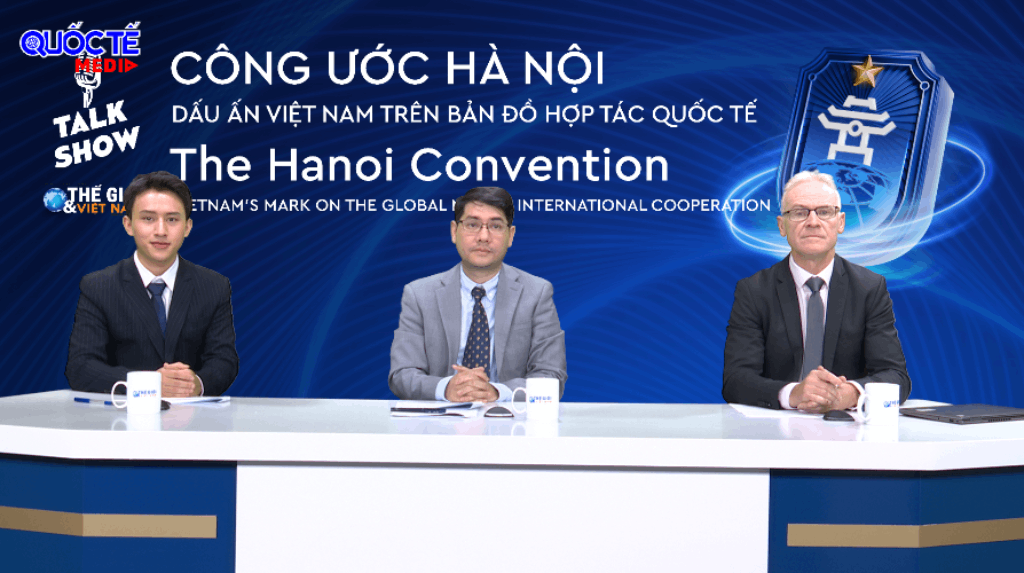
Vietnam’s cultural industries: A distinct path in the era of integration
Latest
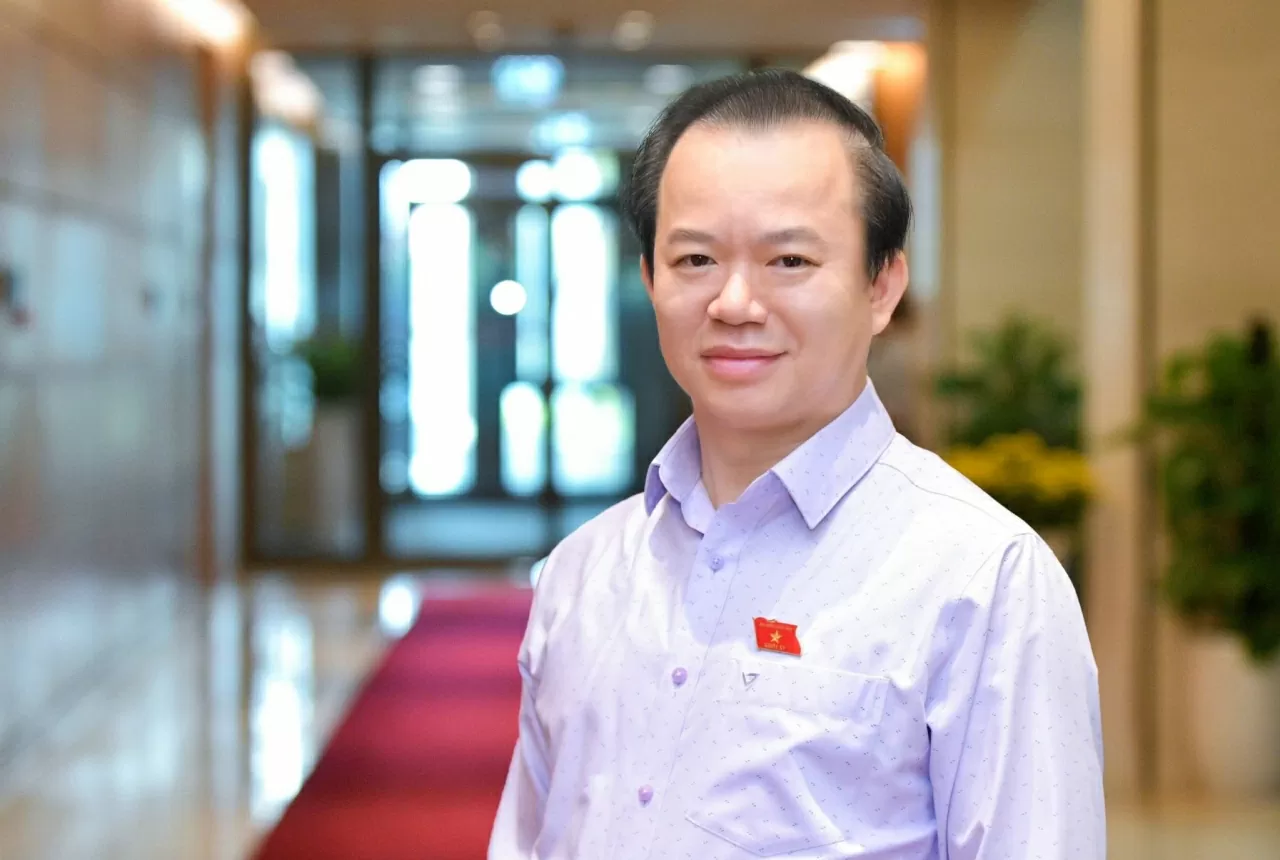 |
| National Assembly deputy Bui Hoai Son. (Source: National Assembly of Vietnam) |
Culture as the "soft language" of global integration
In the era of globalization, where economic and technological boundaries are increasingly blurred, culture has emerged as the “final frontier” through which nations affirm their identity, shape their image, and cultivate unique appeal. Amidst this powerful current of integration, the cultural industries are rising as a form of “soft language”, one that simultaneously promotes traditional values and generates modern, competitive products on the global stage. Cultural industries have become an essential component of many countries’ development strategies, and Vietnam is no exception to this trend.
When speaking of cultural industries as a tool for integration, one cannot overlook the inspirational lessons from other Asian nations. South Korea, once devastated by war, has risen to become a “cultural powerhouse” through its Hallyu strategy, the Korean Wave. Films such as Descendants of the Sun and Parasite, along with K-pop groups like BTS and BlackPink, have not only generated billions in revenue but also helped spread Korean language, cuisine, cosmetics and lifestyle across the globe. This is not merely the success of an entertainment industry, but the result of a national strategy for cultural industries, where traditional identity is infused into contemporary products.
Similarly, Japan has exported its culture through anime, manga and craftsmanship, intertwining the nation’s image with values of discipline, refinement, and the philosophical depth of East Asian tradition. From works like Doraemon and Spirited Away to minimalist architecture and the tea ceremony, Japan succeeded in making the world fall in love with its culture long before it embraced its “Made in Japan” technologies.
Turning to Vietnam, the early signs of a “Vietnamese wave” on the global stage are beginning to emerge. Tran Thanh’s film Dad, I’m Sorry (Bo gia) not only became a domestic box-office sensation but also ranked among the top-grossing titles on Netflix in several Asian countries. By blending folk melodies with modern arrangements, composer Khac Hung has brought traditional Vietnamese music closer to contemporary audiences. Songs like Thuc giac (Awakening) and Nang tho (The Muse) have gained widespread popularity on YouTube, inspiring young audiences across different countries to create cover versions in multiple languages.
Even art forms once considered niche, such as water puppetry, have found their place on international stages, becoming highlights at festivals like the Edinburgh Festival Fringe, where foreign audiences queue up to watch wooden puppets narrate stories of Vietnamese rural life.
It is clear that when culture is produced along a value chain, from creativity and production to distribution and consumption, each artistic work, dish, fashion design, or traditional dance becomes a “soft ambassador” carrying the image of Vietnam to the world. What matters is not only the ability to recount the past, but to make those stories captivating in the present and vibrant for the future. Preserving identity does not mean enclosing tradition in a frame, but opening doors for traditional culture to blend into contemporary life through innovative and dynamic forms of expression.
Integrating through cultural industries does not mean losing oneself in the vast ocean of globalisation. On the contrary, it is a journey of letting Vietnamese identity shine, reaching out to the world and becoming an indispensable part of the global cultural map. In this way, every cultural product, from an ao dai showcased in Paris to the taste of fish sauce featured in European culinary programmes, quietly tells a grand story of a nation with deep historical roots, creative vitality and an earnest aspiration to engage with the world.
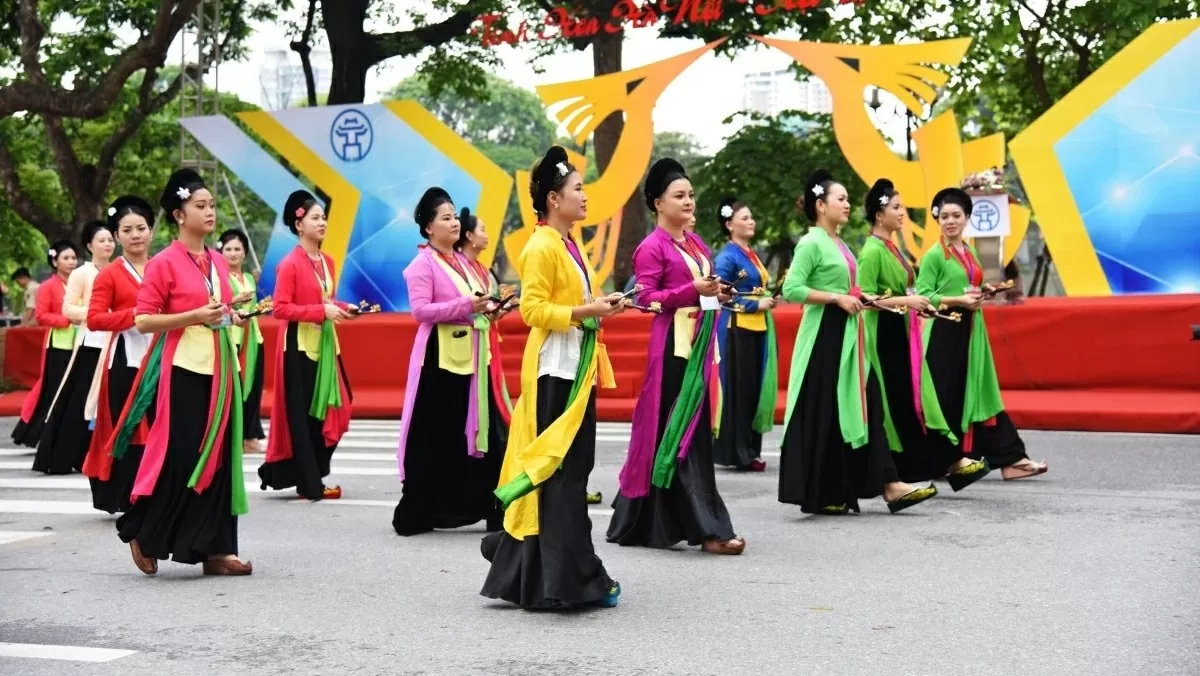 |
| To truly transform cultural industries into a key economic sector, a nationally strategic investment is essential. Illustrative image. (Photo: Ha Phuong) |
Preserving the national spirit in every cultural product
Global integration does not mean losing one’s identity. On the contrary, in a world where culture saturates every digital platform, newsfeed, and smartphone, what is unique and authentic becomes the most powerful competitive edge. Preserving cultural identity while developing creative industries is therefore not a mere option, but a strategic imperative for Vietnam to claim its place on the global creative map.
Vietnam’s approach to developing its cultural industries must begin with local roots. The country possesses immense cultural resources, from 54 ethnic groups with rich oral traditions and folk festivals, to UNESCO-recognised heritages such as the Royal Court Music of Hue, the Gong Culture of the Central Highlands, Quan ho folk songs of Bac Ninh, the Mother Goddess Worship of the Three Realms and most recently, the Xoe dance of the Thai people. The key lies in transforming these heritages into creative products that are relevant to modern life and emotionally resonant with diverse audiences.
Many young Vietnamese artists are already leading this transformation. Thao Vu’s Kilomet109 brings indigo-dyed linen from the Nung and H’Mong communities to global runways through minimalist and modern designs. Similarly, designer Vu Thao Giang blends traditional lacquer with artisanal techniques to create unique accessories showcased at design fairs in Milan. These innovations do not merely preserve heritage, they revitalise it, making culture a living part of today’s creative economy.
The State plays a vital role. Targeted policies must offer financial support, talent development and intellectual property protection for artists and creative enterprises. No single artist or entrepreneur can build an entire industry. To develop a vibrant creative sector, Vietnam needs an enabling ecosystem, including open creative spaces, idea incubators, cultural start-up funding, and connections with regional hubs like Seoul, Bangkok, Tokyo, and Berlin.
Republic of Korea has set an example with K-Content Valley in Pangyo, a hub for gaming, film and music companies connected to universities and research institutes. Singapore has advanced its creative economy through Gillman Barracks and the Creative Industry Development Strategy, bringing together artists, producers, and investors. Vietnam can take similar steps by forming cultural industry clusters in cities such as Ha Noi, Ho Chi Minh City, Da Nang, Hue and Can Tho - all rich in history, talent and cultural diversity.
However, global integration demands more than cultural preservation. It requires the ability to tell our stories in international languages and formats. This means investing in translation, storytelling, design and digital technologies. A film about Tet (Lunar New Year) will not resonate globally without strong visual language, engaging narrative pacing and high-quality subtitles. The finely crafted product, without a compelling cultural story, risks being reduced to mere merchandise.
Vietnam needs cultural leaders who think like storytellers, not only artists, but strategic creators who can embed national identity into every design, word, and sound and translate Vietnamese values into globally recognisable forms.
To preserve identity is not to cling to old forms, but to uphold the essence, spirit and emotional depth of Vietnamese culture and infuse it with contemporary vitality. That is how Vietnam can truly integrate: not by following the world, but by bringing its authentic self to it.
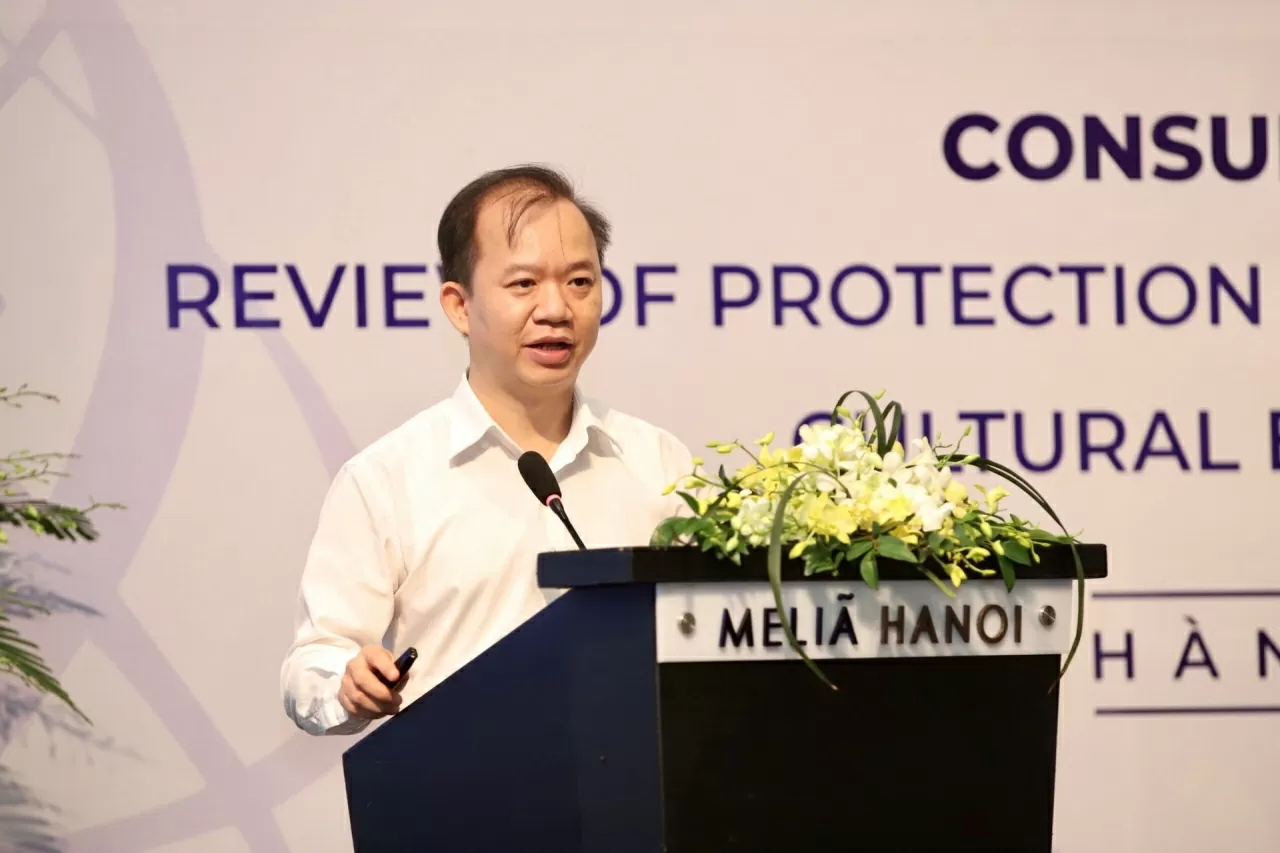 |
| According to Bui Hoai Son, if culture is to become a driver of development, we must move beyond mere preservation. (Photo courtesy of the author) |
Turning cultural industries into a driver of national development
If culture is to become a true driver of development, we must move beyond preservation, exhibition, or performance. Culture must be transformed into an economic asset, one capable of generating added value, employment, livelihoods, and a distinct national brand identity. Cultural industries offer a path to realise this vision, where each cultural value, when strategically produced, lives not only in memory but also in the economic and social life of the nation.
The global experience is clear: countries that leverage soft power as a development tool tend to build more resilient, innovative, and adaptable economies. According to UNESCO’s 2021 report, the cultural and creative industries contributed over 3% of global GDP, created 30 million jobs and accounted for 6.2% of global exports. South Korea generated over 12 billion USD from cultural content alone. In the United Kingdom, over two million people work in the creative industries, spanning film, game design, media and traditional crafts.
In Vietnam, early potential is becoming increasingly evident. In 2023, the domestic film industry alone generated nearly 4,000 billion VND in box office revenue, driven largely by Vietnamese films such as Nha Ba Nu, Lat Mat 6 and Con Nhot Mot Chong, which attracted tens of millions of local viewers.
A new wave of culturally inspired Vietnamese fashion brands is making its mark on international runways. Cultural festivals, from the Buon Ma Thuot Coffee Festival and Hue Festival to the Khmer Cultural Week in Tra Vinh, are no longer just celebrations of heritage; they have become powerful drivers of tourism, consumption and local identity.
However, for cultural industries to truly become a key economic sector, strategic national investment is essential. The priority is institutional reform. Vietnam must continue to strengthen its legal framework on intellectual property, copyright, creative enterprise development and digital transformation in culture. Resolution No. 33-NQ/TW (2023) clearly outlines the goal of developing cultural industries alongside building a healthy cultural environment and shaping human capital. But for the resolution to take root, we need concrete action plans, with measurable targets, economic indicators, and dedicated resources.
Next is human capital. No strong creative industry can exist without talents who combine artistic vision with economic thinking. Universities must reform curricula in culture, the arts, media, design and creative management, integrating market knowledge, technology, and entrepreneurship. Vietnam needs a new generation of "cultural entrepreneurs", individuals who can start businesses grounded in culture and create prosperity through Vietnamese creativity.
In addition, local creative ecosystems must be cultivated. Each city and province can identify its cultural strengths to develop tailored creative industries: Hue with royal heritage and fine arts; Hoi An with crafts and architecture; the Central Highlands with folk festivals; Ho Chi Minh City with music and film; and Hanoi with literature, theatre and creative spaces. This is how cultural industries can contribute to inclusive and sustainable regional development, ensuring no one is left behind in the creative journey.
Finally, cultural industries must be positioned at the heart of national development strategies. Culture cannot remain a soft accessory on the margins of traditional growth models. It must be recognised as a core resource, one with the potential to drive transformation. Imagine a Vietnam where rural areas develop community-based cultural tourism; urban centres become hubs for design and high-end craft production; and products ranging from fish sauce, ao dai, and classical tuong opera to video games, cinema, and fashion are exported under protected intellectual property. This is not a distant dream but a natural direction if we nurture a long-term vision with consistent action.
In a world of constant change, what distinguishes a nation is no longer just its resources, technology, or capital, but the soul of its culture. Vietnam holds an invaluable cultural treasure. Only when this treasure is unlocked through the key of the creative economy can we truly create wealth from within. With the right investment, cultural industries will lead Vietnam’s development, not only in speed but in the depth of its identity.
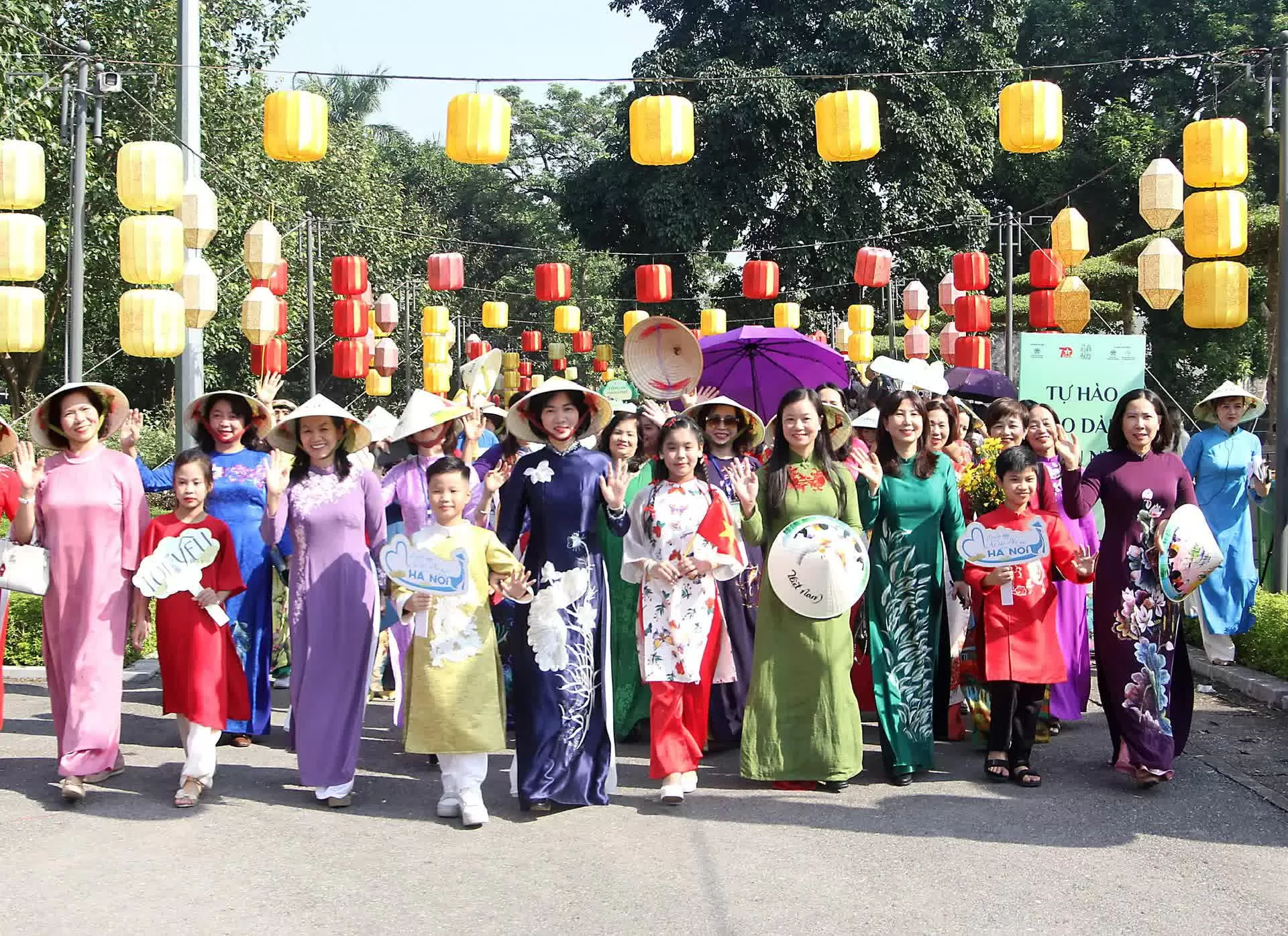 |
| “Ao Dai Connecting Tourism and Hanoi Heritage 2024” parade. (Photo: Hai Linh) |
Shining from identity, soaring through creativity
In a world marked by fierce competition and constant change, where nations race not only in technology and finance but also in cultural influence, Vietnam must define a new position for itself: a creative nation with a distinct identity, capable of touching global hearts through the soul of its own culture.
The cultural and creative industries are not merely a new economic sector. They represent a comprehensive development strategy, a fusion of art, technology, market forces and national identity. This is the pathway to preserve our roots in the present, expand our vision to the world, and cultivate sustainable, internal momentum for long-term growth. No longer a distant concept, cultural industries are already present in everyday life: in vibrant urban rhythms and creative rural spaces, in the stories of artists and entrepreneurs, in each product that carries Vietnamese essence with a contemporary spirit.
To truly make cultural industries a new pillar of national development, Vietnam must go beyond outdated mindsets. We need a long-term institutional vision, consistent investment in human capital, and an enabling creative environment. This is not just a technological revolution; it is a transformation in the way we think about development: one that places culture at the heart of national strategy.
When a nation learns to tell its story in the most compelling, beautiful, and authentic way, it will be heard, admired, and respected. Vietnam has everything it takes to be such a nation: a deep well of heritage, a strong desire for integration and a generation brimming with creative energy. What remains is the courage to give culture the place it deserves in our national development agenda. If we do, then the cultural industries will be the gateway through which Vietnam steps into the future, where identity is our foundation and creativity is the wing that carries the country forward.








